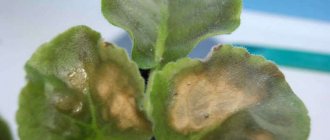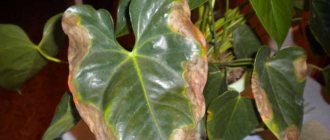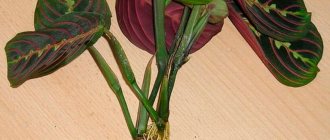Peonies, compared to other garden flowers, get sick less often and are practically not affected by pests. Common causes of most problems are the wrong variety, planting in the wrong place and insufficient care. The plant has few enemies among insects, but there are plenty of diseases. In the early stages, infections and insects cause little harm; it is important to quickly identify and solve the problem.
If no mistakes were made during planting or care, then the source of the damage was the planting material. Infections can spread to peonies with a number of growing, affected plants; they are spread by pests, wind and water. Fungi and bacteria can be introduced into a flowerbed with dirty shoes or insufficiently cleaned garden tools. Before starting treatment, you need to carefully examine the bushes to recognize the type of disease or insect.
Ants on peonies: how to get rid of them and how to treat buds and flowers
The best varieties of peonies for the Moscow region with photos and descriptions
Feeding peonies in autumn, spring and summer with fertilizers and folk remedies
Tree peonies in the Moscow region: varieties, planting and care, preparation for winter, reviews
Gray rot
Gray rot is one of the most dangerous diseases of peonies, because both buds and stems with leaves are susceptible to the disease. Diseased shoots wither, and during the disease process a gray coating appears on the plant, which is why the disease got its name. The development of the disease is favored by coolness, high humidity, precipitation, and temperature changes.
Description
If the small buds turn black and fall off without opening, then the plant is affected by gray rot. The disease is caused by the fungus Botrytis, whose spores are contained in a gray fluffy coating covering the affected parts of the plant. In a diseased peony, young shoots wither, turn brown and break at the base. In flowers that have begun to open, the tips of the petals darken and dry out. Large brown spots appear on the foliage, leaves curl and dry out. Most often, black formations up to one and a half millimeters in size, resembling grains, appear at the base of the peony.
Treatment and prevention
If the peony is already sick with gray rot, then the affected parts of the plant must be cut off and burned. It is important that diseased shoots do not end up in the compost heap. There are no special preparations designed to treat peony specifically against gray rot; you can use antifungicides for other plants, but it is best to take preventive measures to prevent the occurrence of the disease.
Compliance with planting and maintenance rules
For plant health, it is necessary to follow the rules of agricultural technology. The soil is regularly loosened and weeded, and the flowers are watered. In case of close occurrence of groundwater, it is necessary to drain the area. Flowers should be planted while maintaining a distance, in no case thickening the plantings, and change the place of growth from year to year. Before planting plants, planting material and garden tools are disinfected.
Periodic application of deoxidizing additives to the soil
If the acidity of the soil is increased, this contributes to the appearance of gray rot. Heavy clay and loamy soils are often acidified. Accordingly, it is necessary to add additives to the soil that will promote deoxidation.
Bone flour
Bone meal effectively reduces acidity and saturates the soil with a large number of different trace elements and minerals due to its composition, which includes phosphorus, calcium, sodium, magnesium, iodine, cobalt, iron, manganese, zinc and copper. 300 grams of bone meal are added to the soil with an area of 1 square meter in preparation for planting peonies, this will be enough for 2-3 years.
Dolomite flour
Flour is obtained by grinding dolomite mineral, which belongs to carbonates, to the smallest fractions. Fertilizer not only neutralizes the acidity of the soil, but also enriches it with useful microelements such as magnesium and potassium. Flour is added no more than once every 3-4 years, and when calculating the required amount, the acidity and structure of the soil are taken into account. Dolomite can be added to the soil at any time of the year, since it does not interfere with the absorption of other fertilizers by plants .
Limestone flour
Slaked lime (Ca(OH)) is also often used to normalize acidic soil. Compared to dolomite flour, lime flour is cheaper, more often available on sale and is a stronger means of neutralizing acidity. But the strong effect also becomes a disadvantage of the fertilizer, since immediately after application it interferes with plants absorb phosphorus and nitrogen. For this reason, lime is not applied immediately before planting flowers, but in early spring or when preparing beds for winter.
Mandatory and timely pruning
In preparation for wintering, peony stems are cut at the root. If the plant becomes sick in the summer, remove all affected parts of the flower. Pruning should be done only with a sharp tool; cut shoots should be taken outside the site or burned.
Limited use of nitrogen fertilizers
Nitrogen fertilizers are used sparingly, avoiding overdose. Excess nitrogen fertilizers lead to softening of plant cell walls, which increases the risk of gray rot infection.
The use of fungicidal drugs for the prevention and suppression of disease
Fungicides are drugs that help destroy harmful fungi. The substance is widely used in agriculture and floriculture for the prevention and treatment of affected plants. Fungicidal preparations are divided into contact ones, which kill fungal spores by direct contact with them, and systemic ones, which penetrate into the vascular system of the plant, providing prevention and curing deeply penetrated infections.
Copper-containing
To treat peonies, copper sulfate is diluted in a proportion of 50-70 grams per 10 liters of water. It is good to fight gray rot using Bordeaux mixture, which can be prepared as follows: 100 grams of copper sulfate is diluted with water and poured into a mixture of water and 75 grams of quicklime; the resulting solution is diluted with water to 10 liters. If you take the same amount of soda instead of lime, you get Burgundy liquid.
"Fundazol"
"Fundazol" is a contact and systemic agent. To effectively combat gray mold, it is necessary to treat the plant twice. The drug is toxic; use should be avoided if there are small children or animals at home.
Colloidal sulfur
For 10 liters of water you will need up to 100 grams of colloidal sulfur. Preventive treatment is carried out three times with an interval of 10-12 days.
Rules of application
To treat flowers growing near the house, the least toxic fungicides are used, for example, copper sulfate, copper oxychloride, Bordeaux or Burgundy liquid. If you choose the right moment for spraying, when the germinating spores of the fungus are most vulnerable, then the drugs will be quite effective. If the shoots become diseased, the stems are cut off at the root and the affected area is filled with fungicide.
Deadlines
The first time peonies are treated with fungicides is in the spring, when active growth of the stems begins; on average, this period occurs at the end of April. Fungicidal preparations are reused once or twice every 10-12 days, the number of applications depends on the weather and the degree of plant damage.
See also
Description and characteristics of peony variety Sarah Bernhardt, cultivation technologyRead
Alternation of drugs
If you alternate between different preparations, this will help prevent hazardous substances from accumulating in the soil. In addition, alternate use helps to increase the effectiveness of the effect.
Different concentration depending on the age of the plant
The younger the plant, the lower the concentration of the drug should be, since there is a high risk of damaging fragile shoots. This is especially true for burning substances such as copper sulfate. To achieve maximum effectiveness of fungicides with a minimum amount, the plant is not watered from above, limiting itself to spraying. Use a watering can with small holes to water directly the soil around the flower.
Fighting root rot
The general name root rot refers to several diseases caused by different fungi, with the same symptom - damage to the roots, which turn brown, soften, and emit an unpleasant odor. On the aboveground part of the plant, the disease manifests itself in blackening and wilting of shoots. The development of fungal spores is promoted by the same factors that favor the occurrence of gray rot, namely, increased soil acidity and weather humidity, lack of ventilation due to the density of growth, and insufficient drainage of the area.
Using healthy planting material
When preparing planting material, the roots are carefully inspected and damaged ones are removed. To do this, the rotten parts of the rhizomes are cut off with a sharp knife and treated with a mixture of two parts of crushed charcoal with one part of “Fundazol” or sulfur. Disinfection of rhizomes is carried out within half an hour with preparations such as copper sulfate, Fundazol or potassium permanganate.
Correct fit
A place for planting peonies should be chosen that is sunny, well-drained, and may be located at a slight elevation. It is advisable to avoid the proximity of trees and buildings that shade the plantings. The distance between bushes should be approximately one and a half meters.
Application of phosphorus-potassium fertilizers and microelements
To prevent the roots of the plant from starting to rot, phosphorus-potassium fertilizers are used to strengthen the root system, which are applied after flowering in preparation for wintering. This feeding will ensure abundant flowering next season and will help increase the winter hardiness of the bushes. You can use drugs such as the Kemira-combi mixture or potassium monophosphate.
Fungicidal preparations
When a plant gets sick, the affected shoots are cut off, the roots are dug up and the damaged parts are cut off. The cuttings are sprinkled with a mixture of wood ash and Fundazol, the bush is transplanted to a new location, and other plants are treated with fungicides for preventive purposes.
Copper sulfate
To treat flowers with copper sulfate as part of the fight against root rot, the drug is diluted at the rate of 5 grams of the substance per 10 liters of water. One square meter of land will require 5 liters of water.
HOM
HOM - copper oxychloride, helps against many fungal infections, including root rot. The drug, available in powder form, is dissolved in water and sprayed on the plant when the weather is dry and windless.
Fungal diseases
Negative natural factors lead to the development of fungal spores. Various types of rot are the main danger threatening ornamental bushes. Factors that provoke fungal infections:
- Weather conditions – long periods of precipitation and low air temperatures.
- Excessive amounts of nitrogen fertilizers in the soil.
- Strong shading and dense planting of peonies.
- Heavy clay soil.
Attention. Transplanted peonies are at risk. In a new place, the plant goes through a period of adaptation, its immunity decreases. Treatment with fungicide or potassium permanganate will prevent infection.
Next, we will consider common infections of fungal origin.
Gray rot
The fungus Botrytis cineria overwinters in the soil, on the remains of dry plants. The first symptoms appear in early spring on young shoots. The lesion is located at the bottom of the stem. It looks like a brown ring. The shoot tissue softens and the stem breaks off. The infection can appear on leaves and buds. In cold, damp weather, the leaf blades become covered with brown spots, then with a gray coating. In rotting tissues you can see black dots - mycelium.
Information. Early varieties of peonies, as well as ITO hybrids, are susceptible to gray rot.
If the disease overtakes the bush during the flowering period, then the small buds are the first to die. They turn brown, then turn black and fall off. The buds ready to bloom turn brown on the outside, the petals partially open, and the flower becomes deformed. The infection spreads quickly, and if you do not notice it at the very beginning, the bush cannot be saved. After the removal of the ground part, it is too early to talk about victory. Botrytis persists in the soil and plant roots.
Fighting methods
Most plants are infected with botrytis during their life. If you tackle the problem in time, the disease will recede. Diseased areas are completely removed. The rest of the bush is sprayed with Bordeaux mixture or other preparations containing copper. It is recommended to shed the soil and root.
Advice. Treat nearby plants with a fungicide; the fungus is easily spread by wind and insects.
Treatment of the plant begins at the end of April using Fundazol. The procedure is repeated after 10-12 days. This time it is better to use potassium permanganate or copper sulfate. In autumn, it is recommended to spray the peony with a Nitrophen solution. When working with chemicals, you must be careful and protect your skin with gloves. Dilution of drugs is carried out according to instructions.
Rust
The pathogen appears in the summer, after the bushes flower. It is characterized by the formation of brown and yellowish-brown spots on the leaves. Brown pads containing fungal spores form on the underside of the leaf blade. Hot, humid weather contributes to the spread of the disease. In such conditions, within 2-3 days, a brownish coating spreads throughout the entire bush. The disease is typical for central Russia, northern regions and Crimea. The affected plant loses its decorative properties ahead of schedule and blooms worse the next year. Varieties of peonies that are resistant to rust have been developed. Among them are the developments of Russian breeders “Varenka” and “Arkady Gaidar”.
Attention. Promptly remove leaves with fungal spores, they are carried by the wind and infect other plants. Nearby plantings of Scots pine are under threat.
You can cope with the disease by spraying the bush with Bordeaux mixture in the spring and destroying the infected parts of peonies. Kills rust with a 1% solution of colloidal sulfur.
Cladosporiosis
Brown spot quickly covers the entire leaf blade. The disease appears as brown and dark purple spots. The leaves dry out and look burnt. The fungus can spread to stems and buds. The spores grow like a gray coating. The disease occurs in the southern regions.
Septoria
Brown spotting appears on leaves in mid-summer. The light brown areas gradually merge into one spot. The disease spreads through the bush from bottom to top. Weakened peonies freeze in winter or do not bloom the next year. Fungal spores are not afraid of frost; they can cause infection the following year. As a preventive measure, it is recommended to destroy plant residues and replace the top layer of soil in the spring.
There are also other types of spotting: ascocytosis, phyllostictosis. To combat them, a 1% solution of “DNOC” is used in the fall, and “Toxin-M” and “Tsineb” in the spring.
Root rot
Pathogenic fungi affect the above-ground parts of plants and roots. They penetrate the root system through the damaged surface. A dangerous point is dividing the bush during propagation. The cut areas must be carefully treated with a fungicide. The cause of rot is damage caused by nematodes. Under the influence of the fungus, the roots turn black, soften, and acquire an unpleasant odor.
If the damage is minor, you can try to save the plant. The damaged part is cut off and treated with a solution of manganese or activated carbon. If the rot spreads significantly, the bush is destroyed. Common causes of the disease are flooding of the site, acidic soil, dense plantings with poor air access.
Powdery mildew
A typical manifestation of the disease is a white coating on the leaves. The fungus rarely attacks peonies. Dry weather can provoke infection. Mycelial plaque deteriorates the decorative appearance of the bushes. Powdery mildew is removed with a mixture of soda ash, copper sulfate and green soap. Fungicides “Skor” and “Toraz” give a good effect.
Verticillium wilt
One of the serious diseases leading to the death of peony is verticillium wilt. At first, the symptoms of this insidious fungus are masked as a normal lack of moisture. A healthy bush with green leaves begins to wither for no reason, the stems droop. This affects the action of the fungus Verticillium. The pathogen hides in the underground parts of the plant. Before flowering, the peony begins to actively grow. A distinctive feature of the disease is darkened vessels inside the stem, clearly visible when cut.
A wilted bush must be dug up and destroyed. The planting site is disinfected with bleach or formaldehyde solution.
Rust and spotting
When a peony gets rust, brown, orange and reddish spots appear on the leaves, containing spores of the fungus that causes the disease. Spotting manifests itself in the form of staining of leaf areas in blue, purple or light brown, with fungal spores located at the bottom of the leaf. Sparse planting of peonies will prevent the spread of diseases .
Collecting and burning diseased leaves
Plants must be regularly inspected for signs of disease. At the first signs, they take action without waiting for the peony to suffer even more, or for the fungus to infect the surrounding bushes. Leaves with spots that have appeared must be collected and burned immediately, otherwise the fungal spores will spread with the help of the wind and fall on other plants.
Spraying with a solution of fungicides and laundry soap
Treatment with antifungal drugs is carried out once a month or as it is washed off. Affected flowers are sprayed with the same fungicides that are used to combat gray mold. A pinch of washing powder or a soap solution is added to the preparation; you can take household or toilet soap. The soap component will help the substance stick to the foliage.
Thorough cleaning in autumn
Fungal spores overwinter on fallen leaves, so it is important to remove all plant debris. Organic matter is taken outside the site, trying to ensure that infected leaves do not end up in the compost heap, or they are burned.
Burning of crop residues
It is best to burn stems cut in autumn, this will eliminate the risk of spreading fungal spores remaining on the leaves.
Pale and light leaves
The leaves appear visually healthy, but will permanently lose color if the plant becomes weak. The most common reason is improper living conditions.
— Peonies are unpretentious to the conditions, but they bloom profusely, so regular feeding will not be superfluous. If there is not enough nutrition, then the first thing that happens is the leaves fade and wither;
— Yellow dots merge into solid spots, and the leaves turn pale and weaken when peonies are eaten by aphids.
Photo: yxdaha.ru
Diseases of raspberry leaves: descriptions with photos, treatment
Viruses
Fungi predominate among the causative agents of various peony diseases, but viruses are also widespread. Peonies are affected by rattle, ring spot and mosaic. Viruses are transmitted by contact, so it is necessary to disinfect garden tools after working with diseased plants.
Mosaic
Mosaic got its name because of the coloring in the form of alternating yellowish small spots on the leaves of plants. The viral disease is easily transferred to surrounding flowers, so if signs are detected, action must be taken immediately.
Symptoms
When the disease appears, dark and light stripes alternate on the leaves, forming a characteristic mosaic pattern. Further development of the disease can lead to deformation of the leaf plates, thickening and cracks in the stems, and destruction of the roots.
Possible control measures
The disease cannot be treated, so it is necessary to remove the affected plant or parts thereof. Other peonies, bulbous plants, cucumbers, and potatoes cannot be planted in the place of the dug plant for several years.
Immediate destruction of the plant
When there is a large collection of peonies on the site, the mosaic quickly spreads to all plants, if the diseased bush is not isolated. In the case when there are only a few plants, they can be left, but not used for further propagation. The affected flower is dug up and burned, under no circumstances placing the diseased plant in the compost heap.
Removing wounded stems and covering with ash
If signs of disease are detected on the leaves, the shoot is cut off and the cut site is treated with ash or activated carbon. In case of relapse, the plant is completely destroyed.
Avoid varieties susceptible to this disease
To prevent the appearance and development of viral diseases of peonies, it is best to purchase seedlings from licensed stores, giving preference to varieties that are less susceptible to disease.
Thrips
Tiny insects feed on the sap of peonies and suppress them. For destruction, an infusion of dandelions or yarrow, or Karbofos 0.2% solution is used. Treat 3-4 times during the summer, or more often until the plant recovers.
For effective treatment, it is important to quickly identify the cause of the peony’s malaise and remove it, otherwise there is a risk of not only losing the diseased peony, but also other plants in the flower garden.
AllaAuthor of the article
Did you like the article?
Share with your friends:
Rattle
Another name for the virus that has often been used in the past is “Peony ringspot virus.” The first signs of the disease can be noticed in late spring - early summer.
Signs of defeat
The main sign of damage is the appearance of ring-shaped spots on the leaves of the plant. They are located between the veins. The disease can also appear in the form of yellow-green stripes on the foliage or a marble pattern when rings and stripes are combined.
Heaviness depending on variety
Hybrids are most susceptible to the virus, in particular American double peonies. In this case, first generation varieties may not show the disease in any way.
Powdery mildew
The disease most often appears in mature plants. It does not cause any particular harm, but control measures still need to be carried out.
Signs
Powdery mildew appears as a white coating on the top of the leaf blade. The buds become deformed, the leaves wither, dry out and fall off.
Treatment
Powdery mildew is combated by spraying the affected peonies twice with a solution of soda ash with an interval of 10 days. When processing, laundry soap is added to the soda. Figon is also effective against powdery mildew.
White coating on peony leaves
The velvety whitish coating is the spores of a fungus that readily attacks spreading peonies. It could also be a whitish web left by pests.
— Powdery mildew covers the leaves with a rich white coating, which is clearly visible even from afar. No outdoor or indoor plants are immune from it;
— White rot leaves a faded, but more uniform coating on the leaves;
— The bloom of gray rot is slightly darker and can cover all above-ground parts of peonies. Most often it appears in the spring, when it is still cool and there is heavy rain;
— The spider mite leaves a thin whitish web everywhere, which from a distance also resembles a plaque.
Photo: pinterest.ru
Verticillium wilt
Refers to fungal diseases. The pathogen overwinters in the roots, so it is difficult to get rid of the disease. Peonies are usually affected during the flowering period.
Symptoms
The main visible sign of the disease is that flowering shoots begin to wither without obvious reasons. The bush turns yellow, dries out and dies. If the stem is cut off, the vessels will be noticeably darkened.
See also
Description and characteristics of the peony variety Solange, subtleties of cultivation and propagationRead
Fighting methods
It is impossible to cure the plant. The affected peony is dug up, capturing the adjacent earthen ball along with the root system. The soil at the site of the extracted flower is disinfected by filling it with formaldehyde or bleach.
Peonies' leaves turn black
Peony leaves rarely turn black, and most often this indicates damage to the root system. Restoring such a plant is very difficult and almost impossible.
— The spots of cladosporiosis are small at first, but later they can completely ring the leaf, turn black and appear scorched;
— Bacterial burn leads to the fact that entire shoots with leaves “burn” to blackness.
Photo: semena-zakaz.ru
Petunia leaf diseases: descriptions with photos, treatment
Root nematode
With the appearance of nematodes, the peony bush begins to lag behind in development and stops flowering, the leaves and shoots turn yellow and wither. Signs of nematode activity can be confused with manifestations of other diseases; the difference is the appearance of yellow and brown thickenings on the roots.
Description
Root-knot nematodes are microscopic roundworms up to 2 mm long. The parasites received this name because of the round formations, similar to balls with a diameter of 3 to 5 millimeters, galls, which appear on the roots of the plant. Pests multiply in these balls and then spread to other roots in the soil.
Possible media
Nematodes can live on the roots of many flowers and trees. The most commonly affected garden plants are lilies, peonies, clematis, daffodils, gladioli, and irises. But the pest is omnivorous, so it can infect a wide variety of plants.
How to fight
The most reliable way to combat the parasite is to destroy the plant whose root system is damaged. The dug up bush is burned, and the soil in the area where the flower grew is disinfected with a formaldehyde solution. Under no circumstances should an infected flower be placed in a compost heap. In the early stages, the drugs “BI-58” and “Rogor” can help.
Careful inspection of planting material
To prevent the spread of the pest, the root system of the flower is carefully inspected before planting. This way you can notice parasites in time and prevent root-knot nematodes from infecting other plants.
Regular weeding
A mandatory measure to combat root-knot nematodes is the removal of weeds on the root system of which the parasite can successfully develop, subsequently infecting crop plants. Organic residues are burned to prevent the spread of pests.
How to get rid of nematodes and ants on peonies
The root-knot nematode (Meloidogyne spp) is a root parasite that causes the formation of galls on them, shaped like balls with a diameter of 3-5 mm. They are especially noticeable at the ends of the roots. Nematodes, microscopic worms, reproduce inside the galls and then penetrate the soil and infect other roots. Plants are stunted and stop blooming.
Other garden plants can also be carriers of pests, for example: ageratum, snapdragon, calendula, delphinium, garden carnations, sweet peas, scabiosa, maple. Reliable means of control are unknown. If a parasite is found during digging, the entire plant should be burned and the hole should be etched with a 1% formaldehyde solution.
It is recommended to carefully inspect the purchased material - the appearance of the roots of the divisions. And keep the area weed-free, which is always useful.
Ants. These insects are often considered pests of peonies. They say that ants suck the juice from the buds and, settling under the peony, destroy the plant. But many pin growers believe that if there is any harm from ants, it is very small. During the budding period, ants feast on the nectar that is on the bud. If this irritates you, wash the buds with warm water. However, in recent years, a new population of ants has appeared, which settle on the buds and greatly deplete them, interfering with flowering.
To get rid of ants on peonies as quickly as possible, you need to spray the buds with a fufanol solution. As for the settlement of ants under a peony, this means that the plant is seriously sick and severely rotten. And ants are not the reason, but a clear signal of trouble. Ants do not settle under a healthy peony. You will have to dig up such a plant and sort it out on the spot.
Ants
Ants can damage peony buds by gnawing petals, breed aphids on plants, and are also carriers of fungal diseases. To combat insects, store-bought preparations are used, but there are also gentle folk methods: rub the stem with garlic, place a Vaseline ring trap around the shoot, place sweet baits nearby, or plant plants with a pungent odor that repel ants.
Bronze beetles
Most species of bronze beetles are colored with a characteristic metallic sheen, which is why they got their name, but there are beetles of other shades. During the summer season, pests can eat peony buds. Bronze beetles are eliminated mechanically, by manually collecting them in the morning, when the insects are still motionless, or in the evening, luring the beetles with a light source. If the number of insects exceeds 15 each day during collection, it is necessary to spray the bushes and soil with folk remedies or insecticides.
Peony leaves curl
Curling is a fairly rare phenomenon for peonies. Leaves become deformed in extreme cases because the plant is trying to accumulate resources.
— Leaves become smaller, wither, curl and stop developing if the peony is affected by a nematode;
— The symptoms of Lemoine’s disease look almost the same. It is incurable and leads to a lack of flowering and death of the bush;
— Leaves curl when they are eaten by beetles, caterpillars or ants. Peony buds secrete a sweet substance, making the plant very attractive to pests.
Photo: dlobal.ru
Did you like the post? Subscribe to our channel in Yandex.Zen, it really helps us in our development!
May beetles
Adult insects eat leaf blades and buds, but much more dangerous are the larvae, which damage the roots. Biological products, such as Nemabact, Actofit, Boverin, Fitoverm, are considered the best way to combat the parasite, since they are effective and do not harm the environment. When digging in autumn and spring, the larvae are selected manually. Experienced gardeners, in order to drive away cockchafers, treat plants and beds with a solution of ammonia, infusion of onion peels, and potassium permanganate.
Preparations for controlling diseases and pests
An effective way to combat diseases and pests of peonies is to treat plants with chemicals in the spring-summer season. When using chemicals, remember that they can harm surrounding plants and beneficial insects, and use them with caution. We must not forget about personal protective equipment, so as not to harm our own health. The drugs are used according to the instructions on the packaging; exceeding the dose can cause damage to the plants.
Copper oxychloride (CHOM)
Copper oxychloride is used to combat gray and root rot caused by the pathogen Botrytis. Water the peony bush under the base with a solution, repeating the treatment after 10 days.
Copper sulfate
If the plant shows signs of a disease caused by the Botrytis fungus, spray the bush with a half percent solution of copper sulfate and water it at the root.
"Alirin"
“Alirin” will help against late blight. The substance is added before planting the peony in the ground, and also watered with a solution of 1 tablet in 1 liter of water several times during the season. The same measure is effective against root rot. Peonies are sprayed with a solution of the drug several times to get rid of powdery mildew, late blight and gray rot.
"Maksim"
You can prevent the appearance of gray and root rot using the drug "Maxim". The part of the stem with roots prepared for planting is soaked in the solution for half an hour. During the season, “Maxim” is used to water the soil at the rate of 2 ml of product per 1 liter of water.
"Fitosporin M"
If you treat the planting material and soil with Fitosporin M before planting peonies, you can avoid rot, rust and powdery mildew. The result is secured by spraying the plant in the summer.
"Agat-25K"
Before planting peonies, the soil is treated with Agat-25K, which prevents the appearance of powdery mildew, spotting, and also fights the Botrytis fungus. To avoid these diseases in the summer, the bush is sprayed with a solution of the drug.
"Alirin B"
"Alirin B" is used as a prevention of root rot and late blight of peonies. To do this, the drug is applied to the soil of the flower garden before planting.
"Gamair"
Before peonies bloom, as well as after it ends, the plant is sprayed with the preparation “Gamair”. This prevents the occurrence of spotting and powdery mildew. In addition to spraying, the bushes are watered with a solution of the product.
"Topaz"
“Topaz” will help against peony diseases caused by fungi. When the plant is already infected, and the degree of infection is quite severe, you will need to spray the bush. At the beginning of the season, preventive maintenance is carried out by spraying the peony twice with a solution of the drug in a smaller container.
To prevent infection by rust, powdery mildew, black spot and rot, the peony bush is sprayed with Falcon diluted in water. If, nevertheless, the plant becomes sick, the leaf plate is treated on both sides with the same drug.
"Fufanol"
The drug "Fufanol" will help get rid of parasites. The peony is sprayed by dissolving the chemical in water.
"Spark"
If the peony is damaged by ants, the plant can be treated with Iskra. The product is also effective against beetles and caterpillars. The bush is sprayed, diluting the drug according to the instructions.
"Karbofos"
To prevent the peony from suffering from insects, they are destroyed using Karbofos. When parasites appear, the bush is sprayed with a solution at the rate of 30 grams of product per 5 liters of water.
Prevention measures
Treating diseases and pests of peonies is quite difficult, and sometimes impossible. Therefore, the easiest way is to follow the rules of prevention, this will reduce the risk of infection:
- At the end of each season, the site must be thoroughly cleaned. The soil is dug up to remove weeds, all fallen leaves, old stems and dried flowers are collected, taken to the far corner of the garden and burned.
- To prevent peonies from getting sick, you need to monitor the condition of the soil and regulate its composition. Every summer after flowering, the top layer of soil should be loosened, and fertilizers should be applied three times a season - nitrogenous in early spring, potassium and phosphorus during and after flowering.
- Peonies should be planted freely, no less than 30 cm from each other. If the planting is too dense, diseases and viruses appear much more often, and they are more difficult to cure, since the plants quickly become infected from each other.
- To prevent fungal diseases, every spring it is recommended to spray with fungicidal agents - Fundazol, Bordeaux mixture, HOM solution. Treatment allows you to eliminate fungal spores even before the first symptoms of disease appear.
To prevent disease, the flowerbed must be kept clean.
Compliance with the rules of care plays an important role in the treatment of peony diseases and their prevention. Violation of the irrigation regime, lack of light and deficiency of minerals weaken peonies and make them vulnerable to illnesses.











